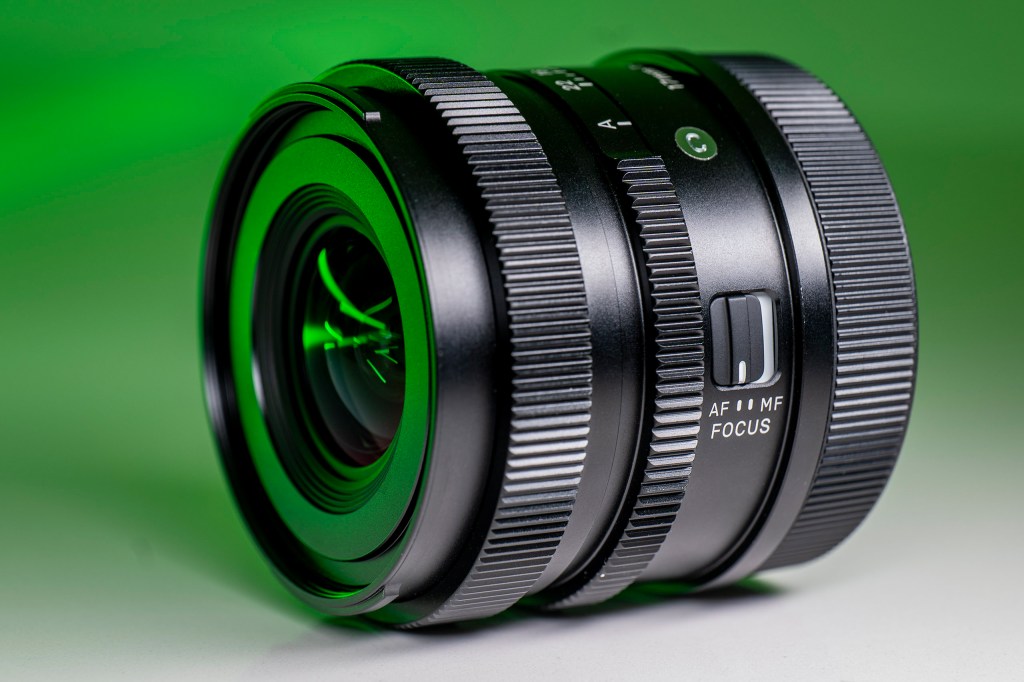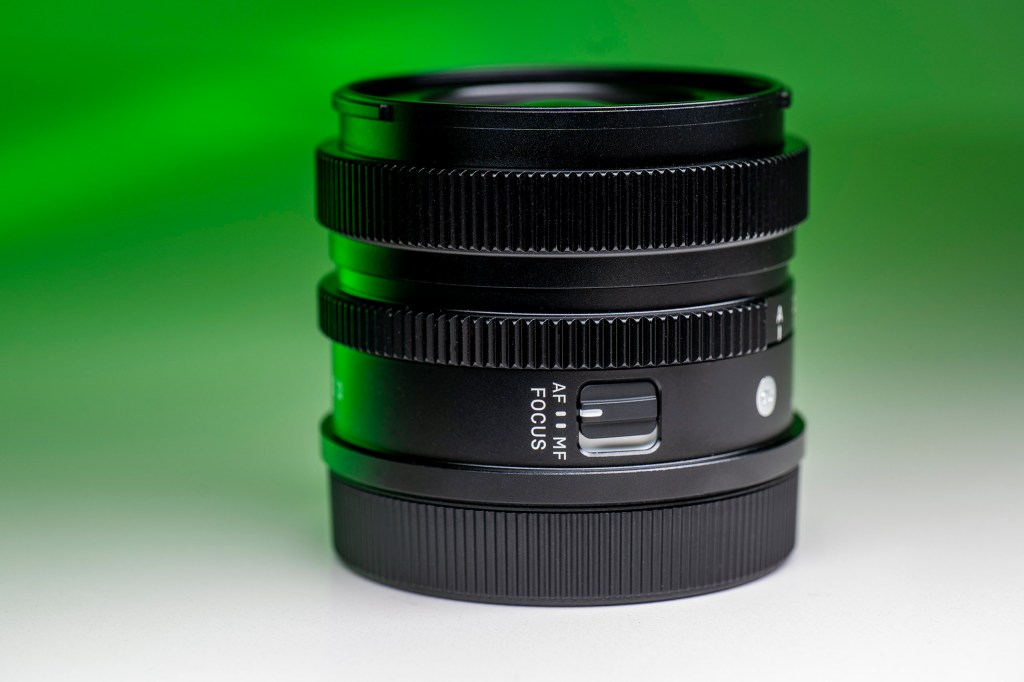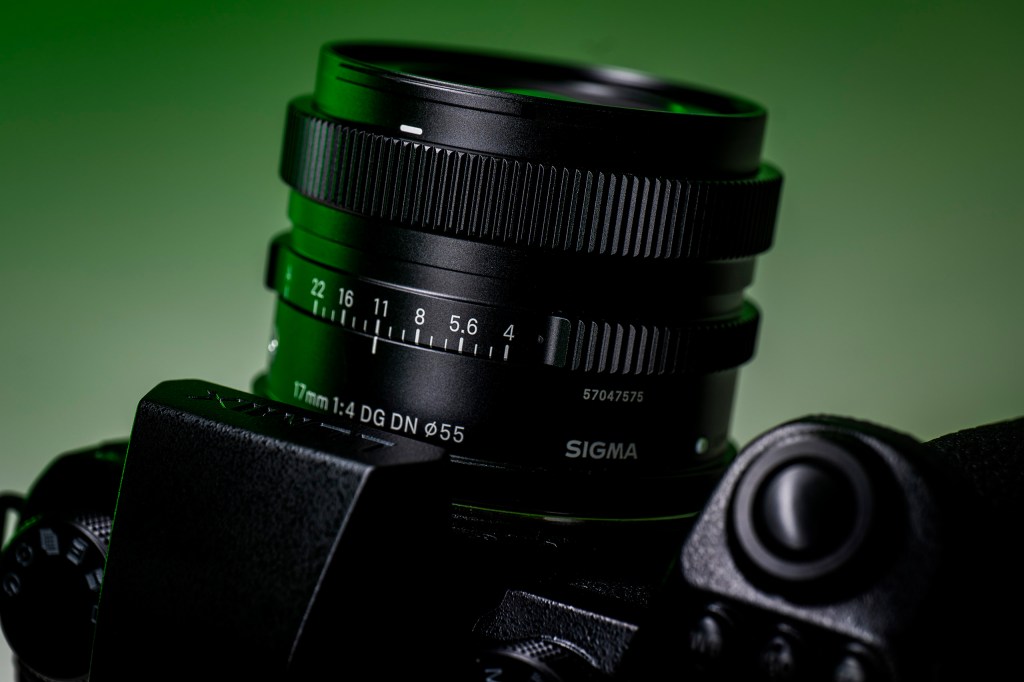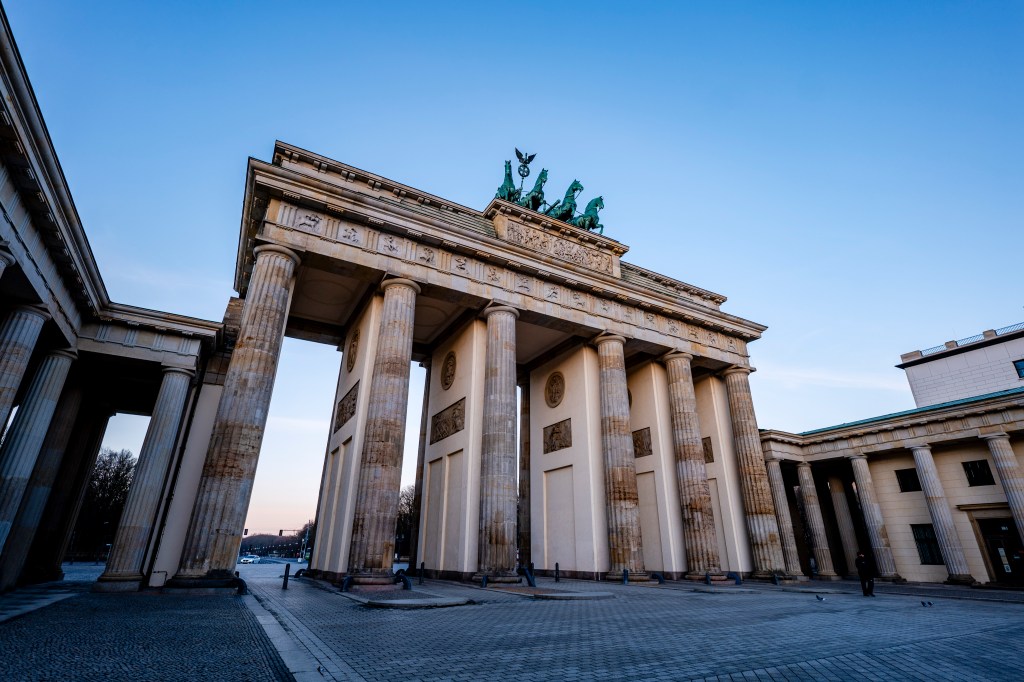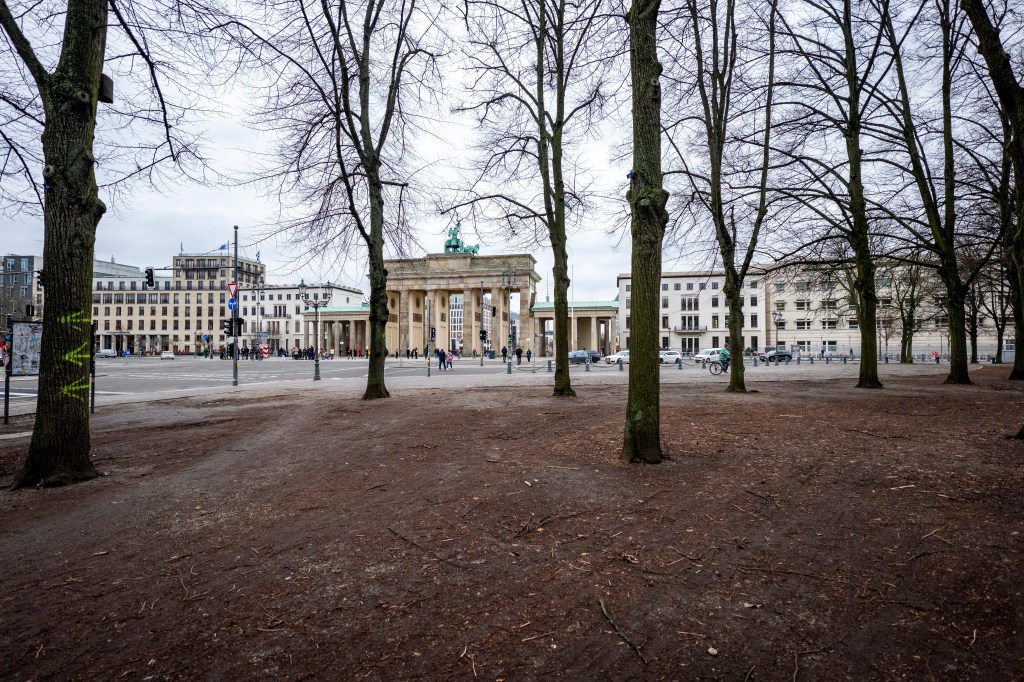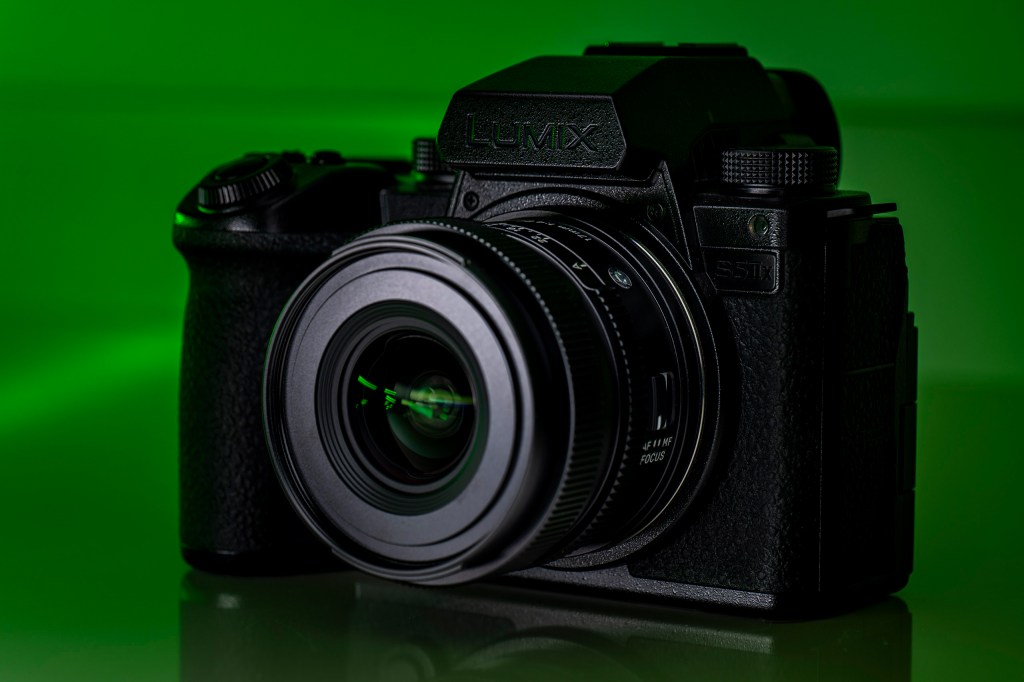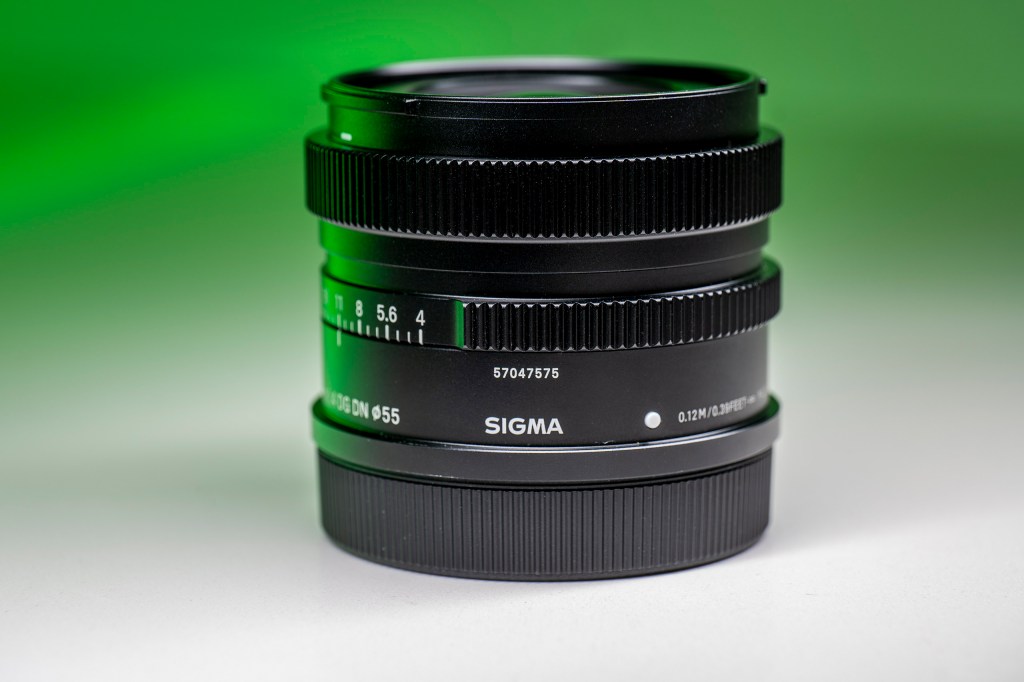Amateur Photographer verdict
F/4 can be limiting when it comes to depth of field but if size and weight is high on your priority list, this impressively sharp, small and lightweight lens will suit your needs.- Super wide angle of view
- Small for the focal length
- Lightweight
- Very nicely made
- Good price
- Restricted maximum aperture
- Limited weather sealing
Sigma’s relatively new I Series of compact and nicely designed lenses now has nine members, and this Sigma 17mm F4 DG DN is the latest and widest of the gang. The I Series sits within the company’s Contemporary segment, so we should expect good performance at a price that makes the lens accessible to most. Lenses in this group are not quite as good as Sigma’s Art lenses, but they tend to cost about 25-30% less.
Sigma 17mm F4 DG DN Contemporary – at a glance:
- $599 / £549
- wideangle prime lens
- For full-frame mirrorless cameras
- Filter thread: 55mm
- Available in Sony E, L mounts
- 64×48.8mm, 225g
- 12 cm minimum focus
- www.sigmauk.com
Like the other Sigma I Series lenses, the 17mm is designed for full frame mirrorless cameras, and is offered in L-Mount and for Sony E-Mount bodies. Sigma says the lens is aimed at landscapers and street photographers, and because of its small size and light weight that it is especially good for travelling with.
Sigma 17mm F4 DG DN – Features
Probably the most outstanding of the Sigma 17mm F4 DG DN’s features is its 103.7° angle of view. While there are wider AF lenses for full frame around, we are in territory that is quite sparsely populated, and those others that exist tend to be quite big and heavy. This lens is just 64×48.8mm and 225g.
Sigma has managed to keep this model very small partly by giving it a less demanding maximum aperture. The other models in the I Series tend to have f/2 or f/2.8 maximum apertures, but to keep this wide angle to the same sort of size as others in the series a smaller maximum aperture was required. It also goes some way to explaining why the price is £549 instead of £900.
Sigma has used two Super Low Dispersion (SLD) elements and three aspherical elements in the 9-element design. These help to keep the unit small while at the same time tackling chromatic separation and general resolution. The iris uses a slightly unexciting 7 blades to form the aperture, which can close to f/22. Our closest focus is 12cm from the sensor. The lens comes with a petal-shaped hood, plastic front and back caps as well as rather nice magnetic alternative metal cap for the front of the lens. The filter thread size is 55mm – which is quite small for a lens this wide.
Sigma 17mm F4 DG DN – Build and handling
I suspect one of the main motivations photographers have for choosing one of these I Series lenses from Sigma is the look and design of the lenses, and the way they handle. This 17mm f/4, in common with all the I Series lenses, is an all-metal affair, with metal control rings along the metal barrel, topped off with that metal lens cap. It looks and feels very cool indeed, and importantly it feels as though it will last extremely well.
We have an aperture ring that clicks very nicely at every third stop between f/4 and f/22, and whose stops are marked out evenly across the range with no bunching at the extremes. We can use the ring manually or set it to the A(uto) position that allows us to dial-in the apertures via the camera body. We also have the choice to work in manual or autofocus, with a sliding switch on the side of the barrel to inform the lens of our intensions. The focus ring offers nice smooth motion with a carefully balanced degree of tension, and it manages to turn in complete silence.
While Sigma would have us believe we need their USB dock to alter the behaviour of the ring between linear and non-linear responses I found I could control this via the Lumix S5ll I was using the lens on. I could also alter the degree of rotation required to take the focus from the closest point to infinity – which are features film makers will find useful.
The two rings on the lens have a very different feel, so with the camera to the eye we are unlikely to focus when we meant to change an aperture – or the other way round. I used the lens on the Lumix S5ll, S5llX and S1R and found it balanced very well with them all. It looks more at home on the smaller bodies of the newer S5 series cameras, but is still very comfortable on the slightly larger S1 models too.
One point worth noting is that Sigma only describes the mount as weather-sealed, with a seal around it to protect the camera from dust and water. For a lens that’s probably destined to be used a lot outdoors, that could be a concern to some photographers.
Sigma 17mm F4 DG DN – Autofocus
The AF system for a lens as wide as this, and with such a small maximum aperture, may not have to work as hard as a long lens with a wide maximum aperture. But that’s not to say that speedy focusing in a 17mm f/4 isn’t important. Fortunately, this lens allows the camera’s AF system to work well and I found that in most situations in which a wide angle like this would be employed the AF functioned without hindering the camera.
It was notable, though, that when faced with moving subjects appearing in the frame, it wasn’t always able to shift quickly enough to find them in the same way that other lenses can on the same cameras. Once the AF is in motion it is quick enough, but there’s a definite delay in it getting going that makes it hard to react to quickly changing situations. Of course, closing the aperture a little more can sometimes give us enough depth-of-field to improve our hit rate, but that either means longer shutter speeds or higher ISO settings – things we don’t always have the luxury of choosing.
I suspect most users will aim a lens like this at relatively static subjects, so that minor delay won’t be an issue. I just found I couldn’t successfully shoot on the move with subjects approaching at speed and short distances.
Sigma 17mm F4 DG DN – Performance
Inevitably, the first thing anyone wants to check in a wideangle lens like this is how well curvilinear distortion is controlled, and whether straight edges close to the edge of the frame are rendered straight or curved. As with many modern lenses, this I Series 17mm spreads the work of some of its corrections across optical design and software profiles that automatically address common problems. One of those issues is curvilinear distortion, so some barrelling is remedied in the design of the optical path and the rest is left to your camera or your software.
Even without the lens profile applied, barrelling isn’t actually too bad, but I found the automatically selected profile wasn’t able to completely remove it. What is left though comes out very easily with some manual slider action. The issue though is the loss of information at the edges of the frame when any form of shape-shifting is performed, as we end up having to crop a little to maintain a rectangular frame. So just take this in to account when you are framing in the viewfinder, and leave a little bit of extra space.
Vignetting is similarly dealt with, but with perhaps a higher degree of success in the automation. Whatever corner shading is left is hardly noticeable, to the point in natural subjects I never felt the need to adjust it. Again, without the automatic profile corrections darkening in the corners isn’t very bad at all, so the brightening process doesn’t create significant additional noise in the corners.
As we might expect, detail resolution is best in the middle of the frame when the middle apertures are in use, but in line with most modern lenses the better performance is concentrated on the wider rather than the smaller apertures. At f/4 the lens performs well in the middle and pretty well in the corners, and performs at its best at f/5.6 where centre and edge performance is more similar. Things are still good at f/8, but noticeably begin to slide at f/11 to f/16, and are very soft at f/22. Some of that softness of course can be counteracted with the Clarity and Dehaze sliders in RAW processing software, but that only improves the appearance of sharpness – not absolute detail resolution.
It’s pleasing to see that chromatic separation is not a feature of this lens, as that’s something hard to fix in software and which ruins resolution too, and that comma and stretching effects are also not obvious. The quality of out-of-focus areas, though, could be more attractive were they a little smoother and less attention-grabbing – but that’s a function of an iris running on just seven blades. Perhaps most people will be focused on the distance anyway.
Sigma 17mm F4 DG DN – Verdict
It’s easy to make a fabulous 50mm lens with a wide aperture and a relatively low price, but when we get into the realm of extreme wide angles, everything is more complicated. Customers have to make a choice between either paying a lot of money to have those complications ironed out, or accepting some minor deficiencies at a lower price. Here we are in the lower price camp, but the shortcomings of the optical performance are mainly quite slight and will probably not bother a lot of photographers.
While the f/4 aperture limits how creative we can be in terms of depth of field, the impressive sharpness wide open does mean we can hand hold more often in dim conditions. So how much this lens will suit you depends on how its characteristics marry up with the kind of things you like to shoot. If small and lightweight are high on your priority list for a super wide angle like this, then the Sigma 17mm F4 DG DN will probably fit the bill perfectly.

Sigma 17mm F4 DG DN: Full Specifications
| Price | £549 |
| Filter Diameter | 55mm |
| Lens Elements | 9 |
| Groups | 8 |
| Diaphragm blades | 7 |
| Aperture | f/4 – f/22 |
| Minimum focus | 0.12m |
| Length | 48.8mm |
| Diameter | 64mm |
| Weight | 225g |
| Lens Mount | Sony E, L mount |
| Included accessories | Hood, caps |
Related reading:
- Have I just found the perfect street & travel camera?
- Best camera for street photography
- How to be an ethical street photographer
Follow AP on Facebook, Twitter, Instagram, YouTube and TikTok.




